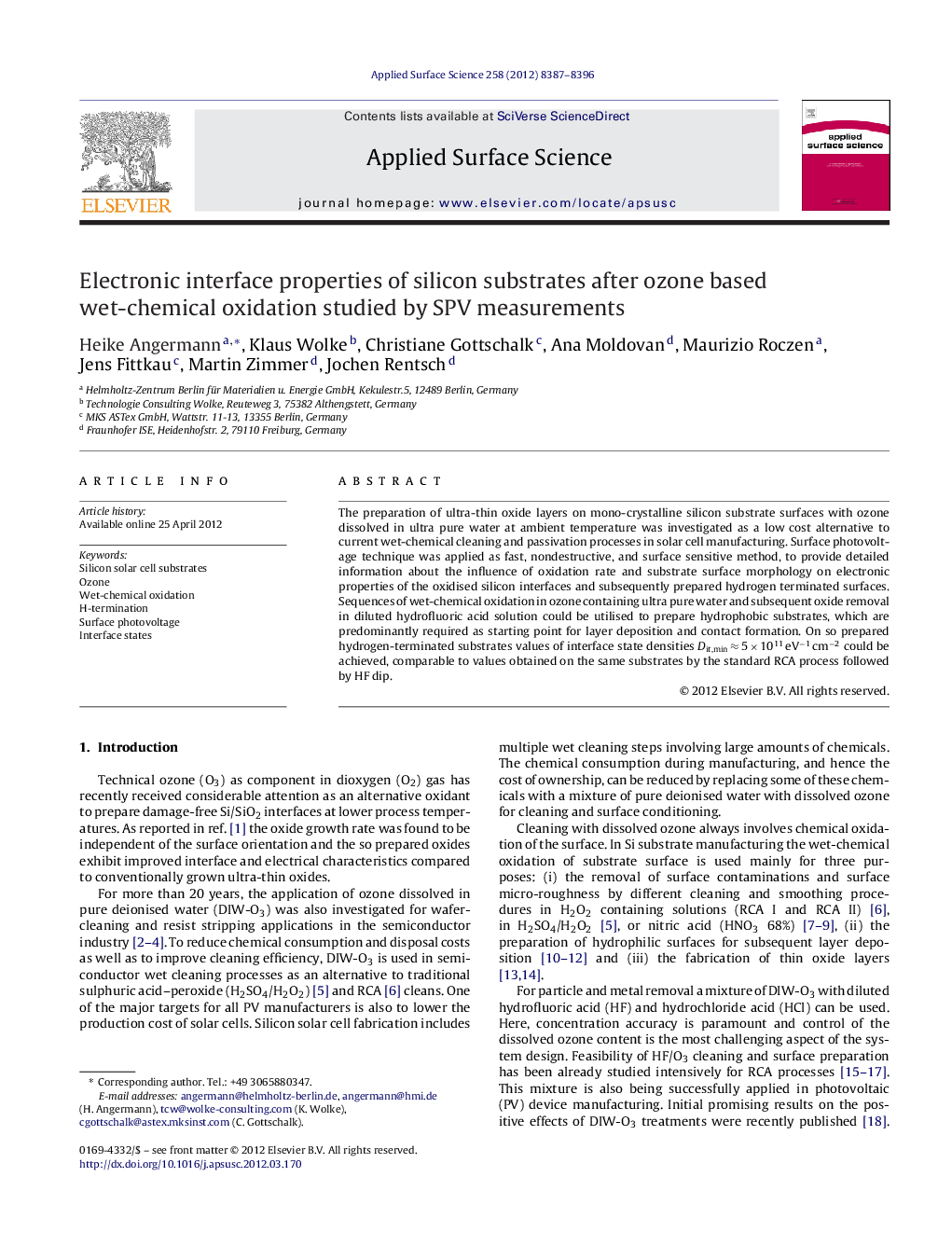| Article ID | Journal | Published Year | Pages | File Type |
|---|---|---|---|---|
| 5364911 | Applied Surface Science | 2012 | 10 Pages |
The preparation of ultra-thin oxide layers on mono-crystalline silicon substrate surfaces with ozone dissolved in ultra pure water at ambient temperature was investigated as a low cost alternative to current wet-chemical cleaning and passivation processes in solar cell manufacturing. Surface photovoltage technique was applied as fast, nondestructive, and surface sensitive method, to provide detailed information about the influence of oxidation rate and substrate surface morphology on electronic properties of the oxidised silicon interfaces and subsequently prepared hydrogen terminated surfaces. Sequences of wet-chemical oxidation in ozone containing ultra pure water and subsequent oxide removal in diluted hydrofluoric acid solution could be utilised to prepare hydrophobic substrates, which are predominantly required as starting point for layer deposition and contact formation. On so prepared hydrogen-terminated substrates values of interface state densities Dit,min â 5 Ã 1011 eVâ1 cmâ2 could be achieved, comparable to values obtained on the same substrates by the standard RCA process followed by HF dip.
⺠Ultra-thin oxides were prepared on Si surfaces with O3 dissolved in ultra pure water. ⺠It was successfully applied to improve the wettability of textured solar substrates. ⺠Sequences of DIW-O3 and oxide removal in HF 1% were utilised to prepare hydrophobic substrates. ⺠On H-terminated Si interface state densities Dit,min â 5 Ã 1011 eVâ1 cmâ2 were achieved. ⺠DIW-O3 can be a low cost alternative to current wet-chemical substrate pre-treatments.
